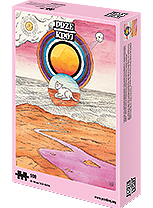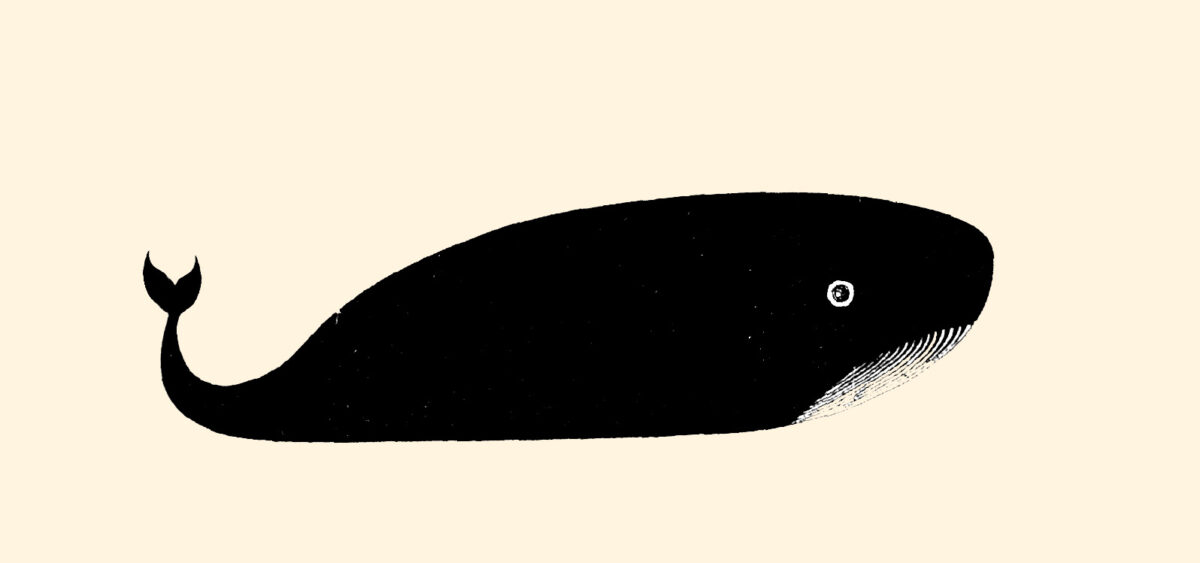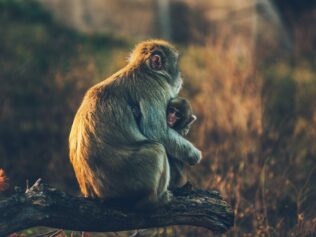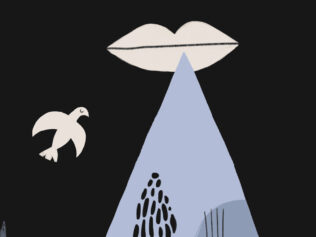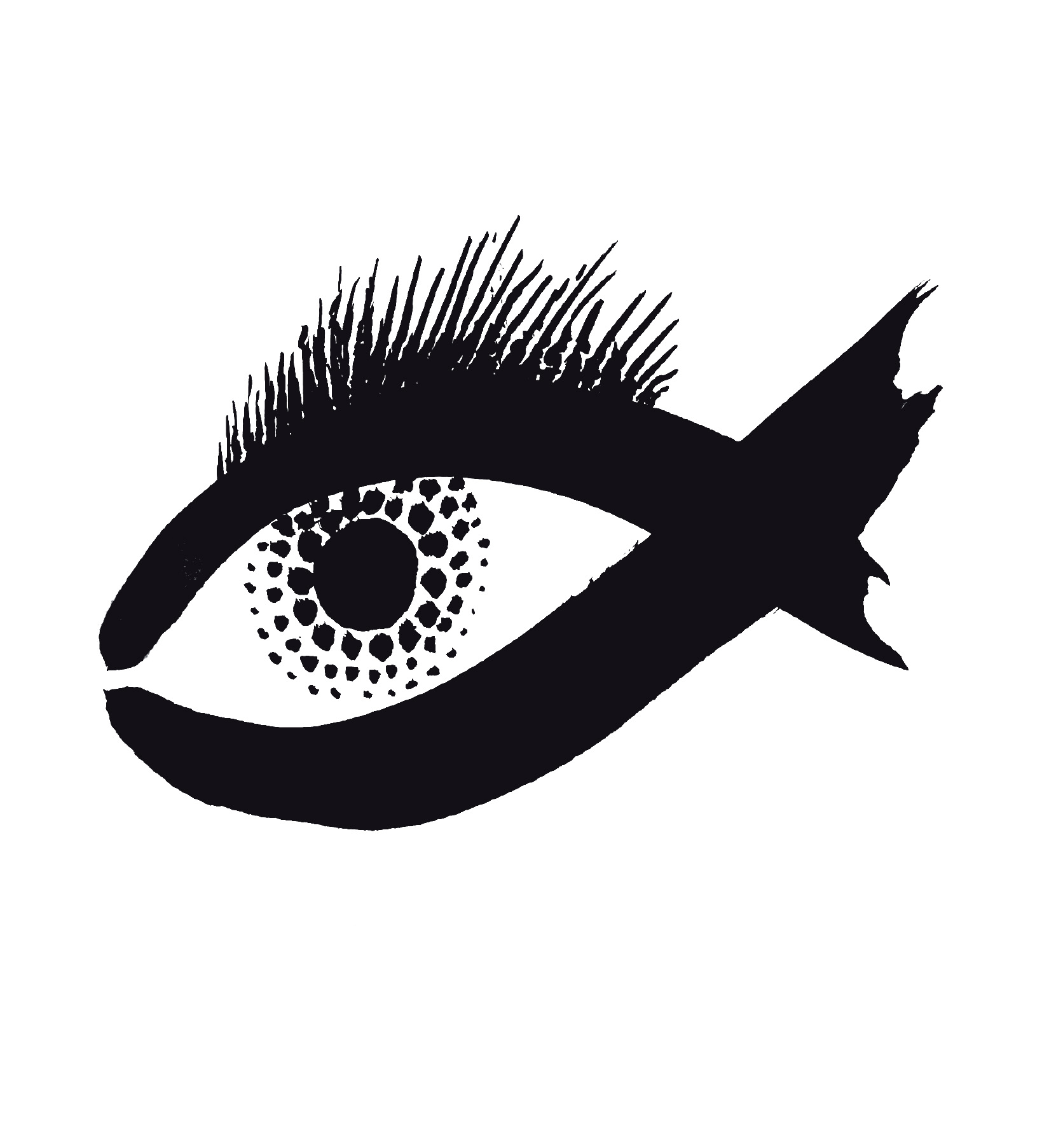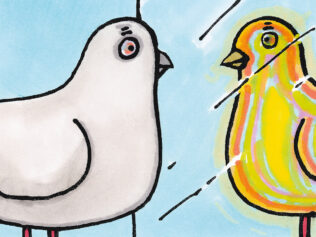
Not only monkeys and mammals are capable of curing and preventing the diseases that afflict them, but also birds and even insects. Foolish people prevent them from doing so, but wise people observe them.
I tread through the forest with high, heron-like steps. I try to brush as gently as possible against the wet hazel catkins and dripping branches. The forest smells of water and moss. I’m holding a map with mysterious little crosses marked on it—I feel as if I were playing some kind of outdoor game. Each cross is a miniature world of one bird couple, a rectangular box made of pinewood hiding a nest woven of grass, moss and feathers, always as unique and one-of-a-kind as the female that builds it. This is the setting for a mini-epic that quietly unfolds over the course of about one month—from the initial weaving of the delicate structure and the appearance of the impossibly small and fragile eggs to the feathered fledglings leaving their wooden home in mid-June.
The cool Swedish month of May has just begun—so most of the birdhouses will be empty, and I won’t find parents perched on the edges of their little nests. At this stage of the season, I could be basking in the sun on the porch of my Swedish home and eating a sweet semla from a nearby patisserie, waiting for the real action: the hatching of baby birds and the ensuing flurry of field research. But—somewhat uncharacteristically—I venture into the oak forests in the month of May to look inside the birds’ freshly set-up households. I’m on the trail of tit witches, shamanesses and crazy herbalists well versed in remedies for diseases and infections plaguing their feathery micro-worlds.
I catch a whiff of the fragrance from afar. It exudes lazily from a birdhouse squeezed into a narrow, still nearly leafless oak copse on the edge of a marshy orchid meadow. Lavender? I go closer. No… It’s fresher, more resinous. By the time I reach the birdhouse, I already know what kind of magic the owner of this nest has used. Looking beyond the edge of the young trees, into an adjacent garden, I can even see the source of these charms of hers. I approach the tree and unscrew the steel bolt holding down the roof of the birdhouse. Strong, pungent fumes hit me from inside. Wonderfully aromatic. At the bottom, there’s a bundle—feathers and grass braided in a circular fractal on a cushion of soft moss. In the middle, there’s a hollow with nine eggs in it—although the word ‘egg’ is hardly befitting for the tiny, oval nuggets covered with shells that are as delicate as parchment. Finally, there’s a chain of fresh, dark green leaves spread around the bowl of the nest with truly shamanic care. Rosemary—most likely stolen from the nearby garden and mixed with shreds of other leaves, probably the young shoots of a chaerophyllum. Very carefully, so as not to disturb the delicate eggs or ruin the intricate herbal lacework, I take out several tiny green leaves and put them in a paper bag. Today, I’m a student of this little bird witch and all the others. I want to find out from them exactly what kind of spells they cast in their nests with these herbal talismans.
That day, while visiting dozens of other nests, I collected traces of the tits’ magic spells from nearly fifteen birdhouses. Sometimes there were mint leaves tucked into braided grass, other times shreds of lavender—probably plucked from a plant recently purchased in a gardening store. Some of these bird witches are perfectionists, arranging intricate patterns of herbs symmetrically around the nest. Others are scatterbrained lunatics who leave piles of random leaves in artistic disarray in the corners of their birdhouses. Some of the sorceresses are clearly very secretive about their craft, but if we took all my tits’ nests out of their boxes and dissected them, we would surely discover that most contained aromatic plants.
It’s no coincidence that the plants found in birds’ nests are usually fragrant ones, rich in essential oils or other strong-smelling substances. In addition to the aforementioned lavender, rosemary, mint and chaerophyllum, blue tits have parsley, nettles, wild thyme, geraniums and sometimes even fir or larch needles in their shamanic repertoire. Thanks to the addition of plants, their nests absorb substances that repel uninvited guests such as avian fleas, which lurk every spring on the roofs of abandoned birdhouses and wait for their new hosts. Fleas not only suck blood, but also infect birds with dangerous parasites. Any method that reduces their numbers in the nest means a better chance of the offspring surviving and successfully flying out of the nest.
The question arises whether Swedish tits differ in this respect, or if medicinal behavior is as normal in the animal world as it is in ours. It turns out that animals use ‘medicine’ so often that researchers decided to give such practices a name. Scientists love to label the world with terms taken from Greek or Latin words. The shamanism used by tits and other creatures falls into what has been labeled ‘zoopharmacognosy’. We can translate this tongue twister more simply as ‘animal medical knowledge’. In other words: various types of behavior, reflexes and learned responses that allow animals to take advantage of the pharmacological benefits of the world around them in order to treat health problems. If we realize the ubiquity of biologically active substances in plant tissues, we understand that animal shamanism—less romantically referred to as ‘self-healing’—is a perfectly natural phenomenon.
Pharmacies Are Everywhere
When a persistent pain drills a hole in your head, you don’t hesitate to reach for an aspirin. The little white pill is the epitome of humanity’s pharmacological triumph—a sterile tablet manufactured in a soulless factory and packed in a hygienic blister pack. You no longer have to rely on capricious, dirty and unpredictable Nature for your aches and pains. And do you know where this aspirin comes from? Nowhere else but from plants. The precursor to acetylsalicylic acid, the active ingredient in aspirin, was an extract from willow bark (the Latin name for the willow genus is Salix, ergo: salicylic). Incidentally, its properties were discovered by accident while people were seeking a cure for malaria—an alternative to quinine, which was quite costly at that time. Willow bark was bitter, just like quinine, which could suggest similar antimalarial properties. Ultimately, the efficacy of willow bark in treating malaria was mediocre, but it proved to be a potent pain reliever and anti-fever drug. In the mid-19th century, willow salicylates were successfully synthesized in a laboratory, and in 1897, Felix Hoffmann—an employee of the German Bayer firm—invented an effective method of producing acetylsalicylic acid.
Aspirin is just one of many examples, however. The quinine mentioned above also has a natural source: the cinchona tree. Vinblastine and vincristine, substances used in cancer therapy, were derived from shoots of the rose periwinkle. Morphine and codeine are derived from the seed capsules of poppies. Atropine, used in ophthalmology and cardiology, is found in deadly nightshade. Cardiac glycosides—in foxgloves. The list seems endless. Pick up any plant you come across while out walking; thanks to the abundance of what are known as secondary metabolites, plants are an inexhaustible treasure trove of active substances that can affect the bodies and physiology of animals.
Paradoxically, many of these properties in plants are the result of them being eaten by animals—numerous active substances became present in plants in order to deter herbivores, by either an unbearable odor or a disgusting flavor. In many cases, however, life has come full circle, arming animals with a veritable arsenal of healing and shamanistic tricks of plant origin.
Indeed, the mere co-existence of plants and animals in the same place is a sufficient condition for such self-medication to develop sooner or later. As usual, evolution is responsible for everything. Let’s imagine a disease—one that’s not very threatening, certainly not fatal, but which makes life more difficult. If our protagonist were a porcupine, the affliction might be amoebic dysentery, which sometimes affects these animals. The disease doesn’t kill, but by weakening the animal it hinders its ability to feed itself and even affects natural selection: the porcupine becomes less capable of finding a mate or escaping a predator. One ailing porcupine accidentally discovers that by digging up and eating the root of a certain plant, it’s able to cure itself of diarrhea. It’ll now certainly have an advantage over other porcupines. Of course, the ability to self-medicate may have some genetic basis, for example due to genes controlling ‘digging’ behavior, but it may also be simply learned and passed on to other porcupines by imitation. One thing is certain: such a ‘self-healing gene’ (or in the case of cultural transmission, a ‘self-healing meme’) will spread rapidly within a group of animals, giving a very specific, measurable advantage to the individuals using it.
Our porcupine example isn’t fictitious—these mammals really can suffer from bloody diarrhea and are actually able to treat it by eating the roots of a mildly poisonous plant from the nightshade family. We already know of many similar animal-plant pairs. Bonobos use the poisonous and acrid Manniophyton fulvum liana: they place a few of its leaves on their tongue and roll them into a large coil, which they swallow without chewing. Due to its composition and consistency, the plant helps bonobos get rid of intestinal parasites. Other monkeys exhibit similar behavior. Eating rough leaves to deworm the intestines is also an annual ritual observed by many animals preparing for a physiologically exhausting or stressful period—this is done, for example, by bears shortly before they go into hibernation and by Canada geese before they begin their autumn migration.
Some animal medical practices are surprising. Brazilian muriqui monkeys use particular plants to regulate their cycles of fertility and infertility—thus, they basically use natural contraceptives. Pregnant elephants eat the leaves of certain trees to speed up and facilitate childbirth. And finally—although this isn’t botanical—Ara macaws and other birds satisfy their medical needs naturally: in the event of illness or poisoning (and often also prophylactically), they eat clay that has detoxifying properties.
No Spine Needed
It’s certainly much easier for us to imagine the discovery and development of medicine among vertebrate animals—we anticipate that an appropriately sized brain guarantees the ability to learn and experiment, which is required, after all, in order to master the arcana of medicinal science. But nothing could be further from the truth. Yes, the cultural transmission (that is, based on imitation and a kind of animal ‘tradition’) of medical innovations is probably limited to animals endowed with highly developed brains, but invertebrates are by no means lagging behind in the field of self-healing.
One of the more surprising examples might be the fruit fly. Adult fruit flies often choose spoiled, slightly fermenting fruit as their breeding ground. Not by accident, it turns out. The ethanol in the rotting fruit repels parasites—hymenoptera that lay their eggs on the fruit fly larvae. This increases the chances of young fruit flies living to see the happy moment of their transformation into adults.
Monarch butterflies (Danaus plexippus) have an even more intriguing strategy. These distinctive orange insects are best known for their mass migrations across the United States to Mexico and back. As caterpillars, they feed on several species of mildly poisonous plants in the milkweed family. Interestingly, the butterflies can selectively choose the species of milkweed depending on whether the egg-laying female is infected with a certain parasite related to malaria that attacks humans. Since one of the species of milkweed is quite effective against this parasite, diseased females select it as a host for their caterpillars. This is, of course, somewhat more difficult than laying eggs on a random plant: the female must actively search for the right species of milkweed, which increases her risk of being eaten by predators.
Unfortunately, we humans sometimes—more or less consciously—have an impact on animal self-medication, and one of the most spectacular examples comes from the insect world. An insect that commonly uses pharmacologically effective substances is bees. In their colonies in the wild, these social insects very often add conifer resin to the wax with which they build honeycombs to house their nesting cells. Such an addition has many health benefits: it prevents the growth of parasitic fungi and acts as a bactericide. Moreover, it protects the colony from attacks by bee-killing parasitic mites, such as the Varroa destructor. Of course, bees domesticated by humans transferred this pharmacological trick to human-built hives—but beekeepers didn’t like it. Honeycombs with added resin are sticky and more difficult to process, so the breeders gradually began to select bee colonies that used less resin. In their own devious way, humans have acted exactly like the evolution which led to the development of animal medicine, but in the opposite direction. Thanks to this, we now have hives that are easier to maintain but bees that are much more susceptible to parasites because they’ve been deprived of their natural defense mechanisms and self-healing abilities that go back hundreds of millions of years.
Fortunately, our interactions with the medical knowledge of the animal kingdom don’t always end so badly. In the spirit of the Lo-TEK philosophy (low tech + traditional ecological knowledge), we’re gradually beginning to appreciate the importance of natural strategies and inventions. Numerous research groups are not only trying to understand the ways in which animals heal themselves, but are also observing local indigenous human communities that have learned many things from animals. A popular view among ethnobotanists is that naturally occurring substances are likely to be able to cure most of the diseases we’re currently fighting with compounds invented in laboratories. They believe it’s possible that medicine derived from plants may turn out to be more effective and safer. There just remains the question of whether we’ll be able to learn about these resources and use them in an honest way, with respect not only for nature, but also for the knowledge of indigenous peoples, who in many cases are their original users and experts.
As for my Swedish tits, I’ve learned a lot about avian hygiene and ‘nesting prophylaxis’ since first deciding to peek at the herbal remedies meticulously added to their nests. This may not be the kind of knowledge that would make me expect a visit from pharmaceutical head-hunters, but I don’t mind. What’s important is that there’s still a lot I don’t know about bird witch doctors. Apart from the aromatic plants mentioned above—which have a fairly clear antiparasitic function—I sometimes find other, more unusual species in the nests of tits, such as leaves of the meadowsweet, a non-aromatic plant that grows in marshy forest glades. Nowadays it’s referred to in Latin as Filipendula ulmaria, but it used to be called Spiraea ulmaria. If this older term reminds you of ‘aspirin’—well done. The drug took its name precisely from this plant, which contains significant amounts of acetylsalicylic acid. As for the magical purpose it has for tits, unfortunately I don’t yet know…
Translated from the Polish by Scotia Gilroy
This translation was re-edited for context and accuracy on June 9, 2022

